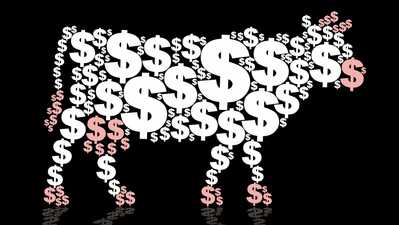| Home | About | Archives | RSS Feed |

The Retired Investor: Consumers Get Price Relief on Beef
 |
Many consumers have changed their diets over the last two years consuming more chicken, pork, and fish and less beef. Driving this substitution have been the stratospheric increases in meat prices. The good news is that high-end beef cuts are now dropping in price.
As readers are aware, prices for food have been rising for months. On a personal basis, my custom of grilling outside at least once or twice a week is just not the same. The prices of steak — sirloin, rib eye, New York strip and steak tips — forced me to switch to chicken kabobs, hamburgers, hot dogs and maybe a cut of London broil.
Beginning in August, however, I noticed that some supermarkets were running sales on some high-priced cuts of meat. Checking prices nationwide, I discovered that prices for rib-eye and beef loin are down nearly 10 percent compared to a year ago. Beef brisket has dropped by more than 18 percent.
On the other hand, ground beef prices, usually the cheapest choice of beef for consumers, increased by 7 percent over the same period. That is understandable from my point of view. I began substituting ground beef for prime rib and other expensive cuts of meat well over a year ago, as have many other shoppers. I suspect my wife is getting sick of eating my meat loaf, and I don't blame her.
I would like to think that the economic concept of product substitution is at work here. The idea is that a customer will substitute a preferred product for another product with similar characteristics. Consumers are increasing demand for ground beef and reducing their demand for high-priced beef cuts.
In this case, substitution occurs due to the large price deferential between the two products. At some point, as supply becomes greater than demand, prices should fall and they have. Meat processors argue that bottle necks had caused the price declines and not price gouging.
The tight labor market and higher employee turnover and absenteeism due to COVID-19 has eased somewhat since last year due to higher wages and fringe benefits, although it is not yet back to pre-COVID levels.
Climate change is another reason for higher beef prices. Drought has forced ranchers to push more cattle into processing plants as drought, high heat, and the price of feed forces the size of herds to be reduced. For example, thousands of cattle in Kansas died in June as a result of excessive heat. Cattle prices are up 15 percent versus 2021, for ranchers, but so has other expenses like feed fertilizer and fuel, so producers are struggling to just break even.
I wish I could predict that meat prices will continue to decline but that doesn't seem to be the case. Prices may see a temporary decline, but only if ranchers continue to reduce their herds. Industry experts and the USDA are forecasting that U.S. beef production will decline once again in 2023, and possibly out into 2024. The law of economics would say, as beef supplies dwindle, processors will be paying (and passing on to you) higher prices once again.
The morale of this tale is to take advantage of cheaper prices while you can and maybe buy a bigger freezer in the process. In the meantime, any meat lover will tell you that the taste of London broil is a far cry from a juicy, rib-eye, but steak is steak when you're craving beef.
Bill Schmick is the founding partner of Onota Partners, Inc., in the Berkshires. His forecasts and opinions are purely his own and do not necessarily represent the views of Onota Partners Inc. (OPI). None of his commentary is or should be considered investment advice. Direct your inquiries to Bill at 1-413-347-2401 or email him at bill@schmicksretiredinvestor.com.

